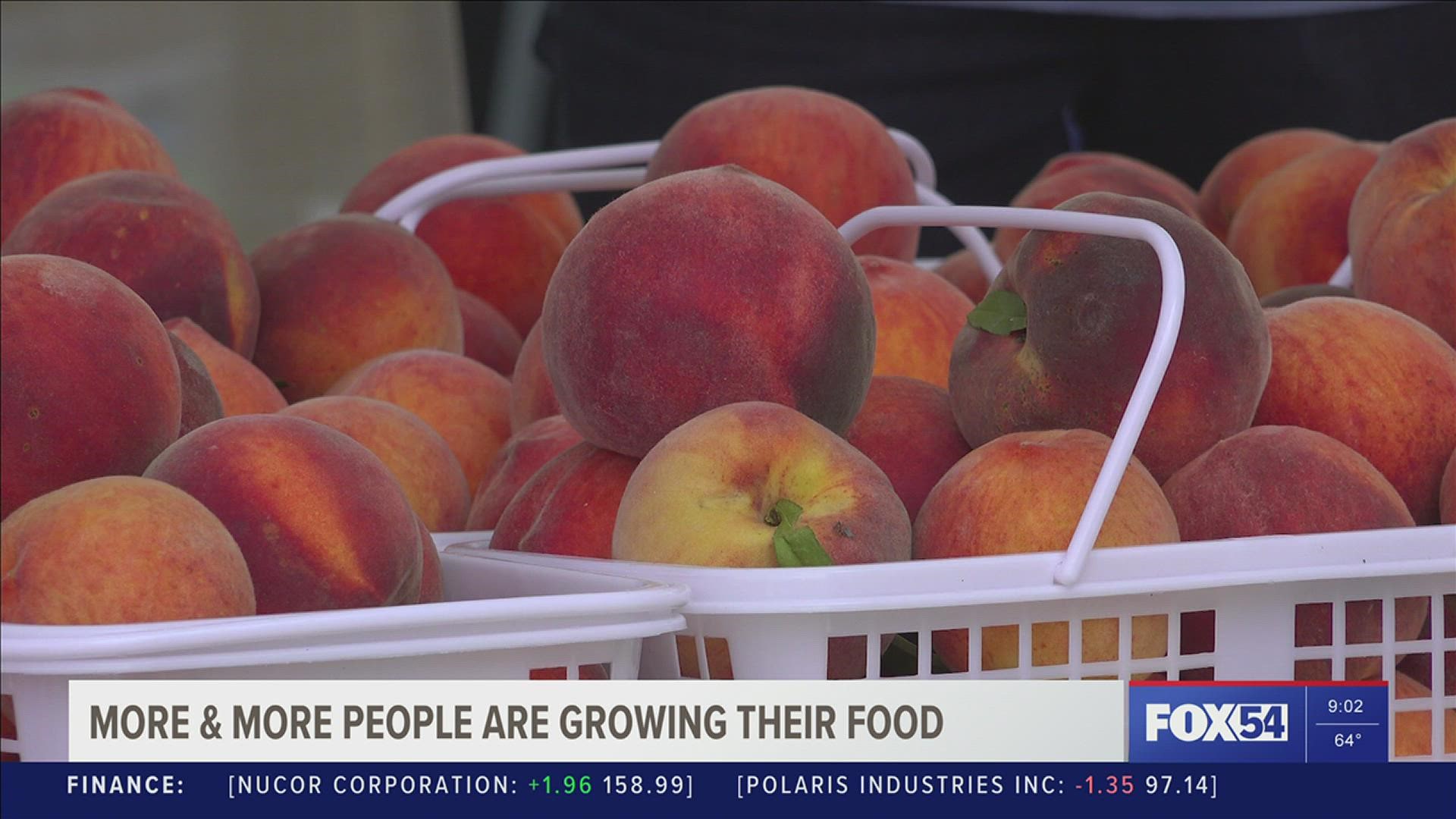HUNTSVILLE, Ala. — The cost of everything from gas to burgers may be rising, but home gardeners growing produce have found a way at least to avoid paying $4 for a pound of tomatoes.
Fertilizing those tomatoes — or cucumbers or flowers, for that matter — is another story, as the cost of soil amendments has been soaring.
All plants require nutrients, which occur naturally in the soil. But over time, they become depleted and need to be replenished for plants to thrive.
Most fertilizers contain three primary nutrients: nitrogen, phosphorus and potassium, represented by the N-P-K ratio on the package. Nitrogen directs the plant to channel its energy into green, leafy growth; phosphorus encourages the development of roots, fruits and flowers; and potassium benefits the plant’s overall health.
Many fertilizers also contain secondary nutrients, like calcium and magnesium, and micronutrients like iron, copper, boron, manganese, zinc and molybdenum. All are necessary for optimal plant growth.
The good news is they don’t have to come from a bag or a bottle.
There are many ways that home gardeners can save money while providing their plants with high-quality nutrients.
Consider grass clippings: Allowing them to remain on the lawn after mowing can eliminate the need for fertilizer. As they break down, fresh clippings release a natural source of nitrogen into the soil that will sustain turf grasses (don’t use fresh clippings in garden beds; they’ll burn your plants).
Compost is the single best soil amendment available. It increases sand’s moisture-retention, improves clay’s drainage and adds beneficial nutrients to the soil. Incorporate generous amounts into beds or planting holes, or use it in place of mulch.
If making compost isn’t your bag, there’s no need to buy it: Simply collect fruit and vegetable peelings and other kitchen scraps (but no meat, dairy or fats) in a bowl on your countertop. Whenever it fills up, dig its contents into the garden. As the scraps decompose, they’ll add nutrients to the soil. Just be sure to bury them at least 10-12 inches deep to avoid attracting hungry wildlife, and dig several inches from plant rows to avoid damaging roots.
Many gardeners treat their plants with fish emulsion, an organic, fast-release liquid fertilizer made from whole fish and byproducts from the fishing industry. It contains nitrogen, phosphorus, potassium, calcium, magnesium, sulfur and sodium, among other nutrients. It’s about as expensive as it sounds, but there are ways to avoid buying it.
Plants appreciate a wide array of fish-based applications, including a whole fish placed at the bottom of each planting hole, buried fish scraps (again, at least 10-12 inches deep) or homemade fish emulsion made by soaking scales, bones and entrails in a tightly sealed 5-gallon bucket of water for at least a month, then straining the liquid and using it to water plants. (Avoid using drained water from canned tuna, however, as its high sodium content may damage the soil and your plants.)
If you’re an angler, you already have access to these amendments. If you aren’t, your local fishmonger may be willing to give away — or sell at low cost — scraps and heads that would otherwise be discarded.
Plants also benefit from used fish-tank water, which is rich in nitrogen and other nutrients.
When you boil vegetables and pour the water down the drain, you’re discarding a motherlode of vitamins and minerals that could enrich your garden. And water from boiled eggs is full of calcium, which is especially useful for tomatoes and peppers. Let each come to room temperature before applying.
You can even use eggshells in place of garden lime, as both are made of calcium carbonate. Microwave for 2 minutes to dehydrate them — then grind in a high-powered blender, coffee grinder or food processor. Incorporate the resulting mineral-rich powder into the soil. The same can be done with banana peels, which are full of plant-boosting potassium.
Master gardener Jessica Damiano tried this recipe. "I recently learned of the benefits of watering plants with a homemade yeast brew. I gave it a try, mixing a packet of bread yeast and a tablespoon of sugar into a liter of warm water, then placing it in a dark spot for 2 hours. Next, I diluted the frothy mixture with 3 gallons of water and applied about one cup to each plant. Three annual applications (not more) are recommended — one each as plants begin rooting, flowering and fruiting.
"It’s too soon to ascertain any benefits to my garden, but the science seems sound: As yeast digests sugar, it releases nitrogen, phytohormones, amino acids, enzymes and other root-stimulators that aid plant growth and productivity. It also feeds beneficial bacteria in the soil and improves plants’ disease resistance."
And the best part is it cost about 79 cents to make.

